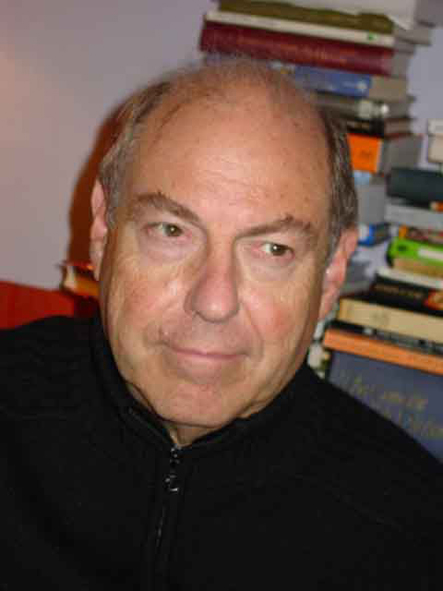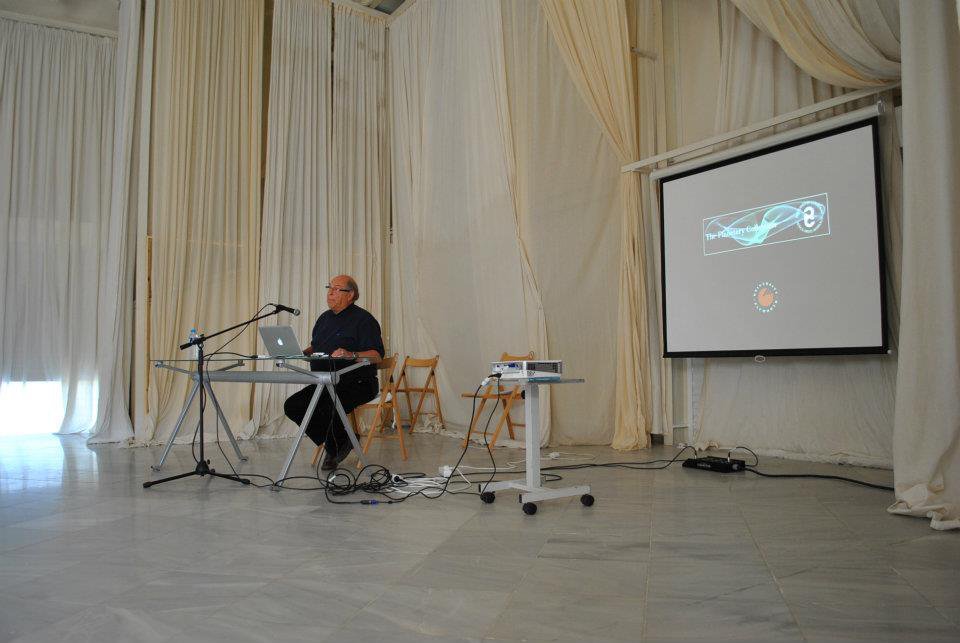By Eva Kekou, 4Humanities International Correspondent
I had the honor and pleasure of interviewing artist and theorist Roy Ascott, President of the Planetary Collegium, and DeTao Master of Technoetic Arts in Beijing DeTao Masters Academy.
Eva Kekou: In all biographies and articles I have read about you, you have been defined as the one who “brought together the science of cybernetics with elements of Dada, Surrealism, Fluxus and Pop art.” I would kindly like you to comment on the cited comment yourself – I myself found your work and contribution too vast to be defined!
Roy Ascott: That does seem an extravagant claim! Certainly both constructivism, and the challenge set by Duchamp, have been important to me. But so too have questions of consciousness, and the nature of mind. From the start I saw interactive systems as much socially as aesthetically significant.
EK: You have been an artist and theorist who has been following the changes from analogue to digital media and who could easily map the impact of history and the development of technology for the art. How do you see art evolving through the advances of technology and communication technology?
RA: The answer to that is in the two-part paper I published in Cybernetica back in 1964: Behaviourist Art and the Cybernetic Vision. When art is understood as a form of behaviour, and process precedes project, then inevitably technology has a place it its development. It was not difficult for me to foresee the impact of computer communications on every aspect of our lives, and the central importance of cybernetics in spiritual as well as social development. However technology embraces traditional methodologies as well as the modern. In terms of consciousness (the item highest on our agenda in both science and the arts), traditional psychoactive practices should be re-examined alongside the most advanced research in the chemistry of the mind. The future of art lies in a pharmacological context.
EK: “Telematic art” puts great value on the participant and helps one to get more involved. This is also, in my view, the meaning of media art: this art focuses on the relationship between work and viewer. How do you think that audiences experience telematic art?
RA: We are moving beyond art in many ways, but telematic art has been the precursor of the present fascination with social media, online games, and world-building.
EK: You have exhibited art around the globe and you have also given keynote talks worldwide. I think it’s great that you now transmit all your knowledge and experience through the Planetary Collegium and that you contribute to research from different spots on the globe.
RA: Yes, it’s very rewarding. The Collegium does enable its research candidates to theorise their work in a creatively dialogic environment. My new appointment as the DeTao Master of Technoetic Arts at the DeTao Masters Academy in Shanghai now gives me the opportunity to develop art, technology and consciousness research in China.
EK: What are the aims of the Planetary Collegium in general and of I-Node in particular? Do you often relate or communicate with the local community and are you also interested in each country’s culture? How important is that in your research?
RA: The Collegium aims to produce new knowledge in the context of the arts, through transdisciplinary inquiry and critical discourse, with special reference to technoetic research and to advances in science and technology. It seeks to reflect the social, technological and spiritual aspirations of an emerging planetary society, while sustaining a critical awareness of the retrograde forces and fields that inhibit social and cultural development. It combines the face-to-face association of individuals with the trans-cultural unity of telematic communities, thereby developing a network of research nodes strategically located across the planet, each with a distinctive cultural ethos. The Collegium seeks outcomes that involve new language, systems, structures, and behaviours, and insights into the nature of mind, matter and human identity
EK: On what criteria did you choose to establish a new node in southeastern Europe ( I-Node)?
RA: Above all, the enthusiasm and intellectual energy of Katerina Karoussos to serve the advancement of art in this way. This has been helped by the supportive interest of the director of the ICAC in Kefalonia. The unique geographic and cultural specificities of the region provide a rich combination of committed aspiration and valued tradition. With the creation of I-Node, the door is open for great regional innovation and international co-operation.

